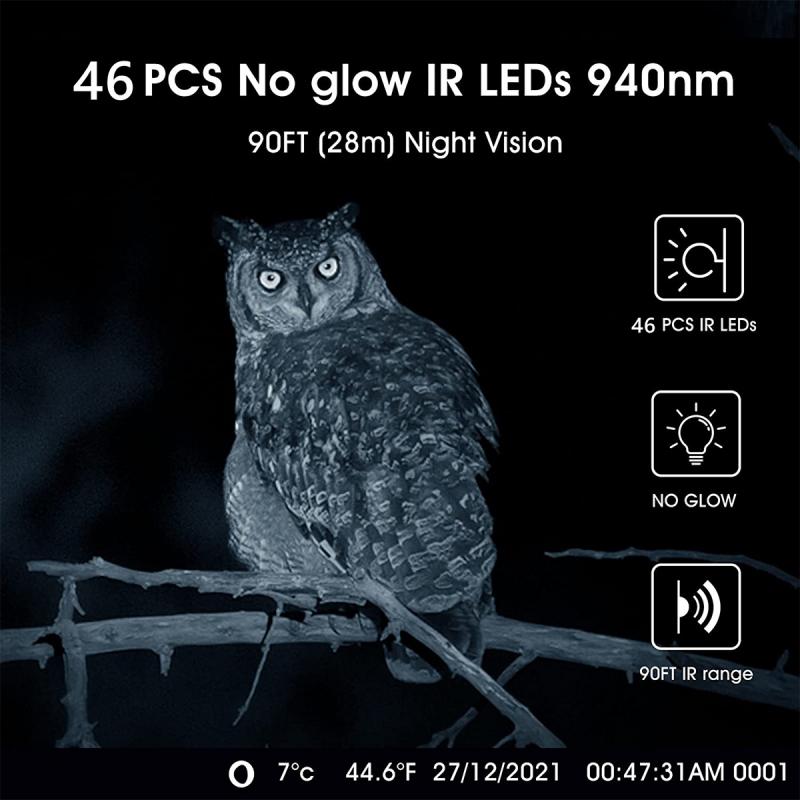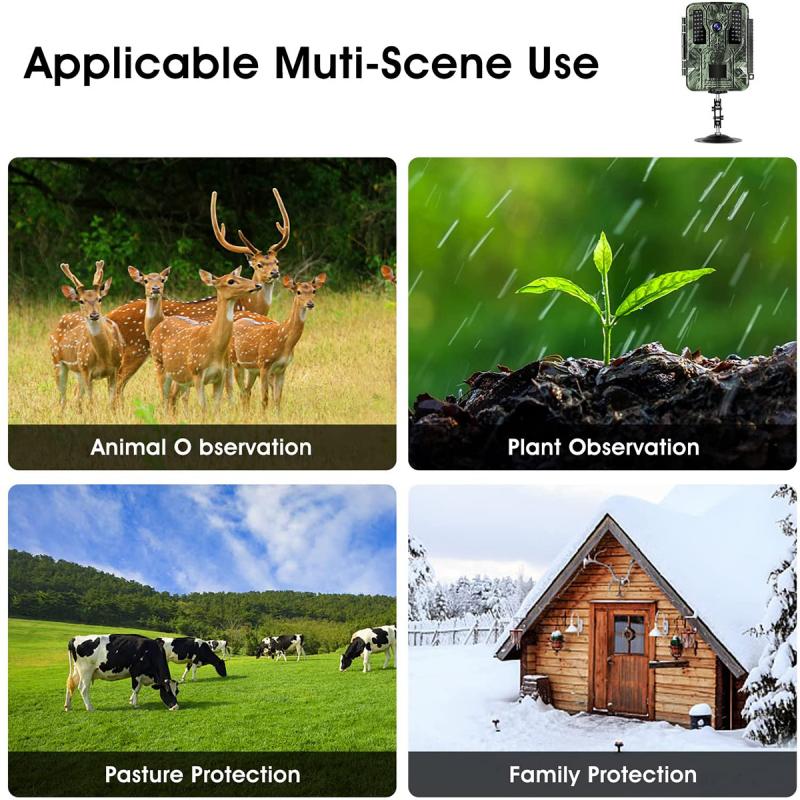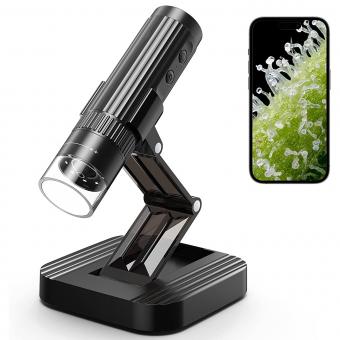Can Chloroplasts Be Seen With A Light Microscope ?
No, chloroplasts cannot be seen with a light microscope.
1、 Chloroplast structure and organization in plant cells
Yes, chloroplasts can be seen with a light microscope. Chloroplasts are the organelles responsible for photosynthesis in plant cells. They are double-membraned structures that contain a green pigment called chlorophyll, which gives plants their characteristic green color.
When viewed under a light microscope, chloroplasts appear as small, oval-shaped structures within the cytoplasm of plant cells. They can be observed as distinct, green-colored bodies, especially in cells that are actively photosynthesizing. However, the resolution of a light microscope is limited, and therefore, the detailed internal structure of chloroplasts cannot be visualized with this technique alone.
To study the structure and organization of chloroplasts in more detail, electron microscopy techniques are often employed. Electron microscopes use a beam of electrons instead of light, allowing for much higher resolution imaging. With electron microscopy, it is possible to observe the internal membrane system of chloroplasts, known as thylakoids, as well as other components such as starch grains and lipid droplets.
It is worth noting that advancements in microscopy techniques, such as confocal microscopy and super-resolution microscopy, have allowed for even higher resolution imaging of chloroplasts. These techniques have provided valuable insights into the dynamic behavior and organization of chloroplasts within plant cells.
In conclusion, while chloroplasts can be observed with a light microscope, electron microscopy techniques are necessary to study their detailed structure and organization. The latest advancements in microscopy have further enhanced our understanding of chloroplasts and their role in photosynthesis.

2、 Visualization of chloroplasts using light microscopy techniques
Yes, chloroplasts can be seen with a light microscope. Light microscopy techniques have been used for many years to visualize chloroplasts in plant cells. Chloroplasts are the organelles responsible for photosynthesis, the process by which plants convert sunlight into energy.
To visualize chloroplasts using a light microscope, plant cells are typically stained with a dye that specifically binds to chlorophyll, the pigment responsible for the green color of chloroplasts. This staining technique allows researchers to easily identify and observe chloroplasts under a light microscope. Additionally, the use of fluorescent dyes can enhance the visualization of chloroplasts by emitting light of a specific wavelength when excited by a light source.
Advancements in light microscopy techniques have further improved the visualization of chloroplasts. Confocal microscopy, for example, allows for the capture of high-resolution, three-dimensional images of chloroplasts. This technique uses a laser to scan the sample and collects the emitted light at different focal planes, resulting in a detailed image of the chloroplasts.
Furthermore, the development of super-resolution microscopy techniques, such as stimulated emission depletion (STED) microscopy and structured illumination microscopy (SIM), has pushed the limits of resolution in light microscopy. These techniques enable the visualization of chloroplasts at a nanoscale level, providing unprecedented detail of their structure and organization.
In conclusion, chloroplasts can indeed be seen with a light microscope. Over the years, advancements in light microscopy techniques have greatly improved the visualization of chloroplasts, allowing researchers to study their structure and function in greater detail.

3、 Limitations of light microscopy in observing chloroplasts
Chloroplasts, the organelles responsible for photosynthesis in plant cells, can indeed be seen with a light microscope. However, there are certain limitations to using light microscopy in observing chloroplasts.
One of the main limitations is the resolution of the light microscope. The resolution of a light microscope is limited by the wavelength of visible light, which is around 400-700 nanometers. This means that structures smaller than this limit cannot be resolved. Chloroplasts are typically around 2-10 micrometers in size, which is well within the resolution limit of a light microscope. Therefore, chloroplasts can be observed and studied using this technique.
However, it is important to note that the internal structures of chloroplasts, such as the thylakoid membranes and grana, may not be clearly visible with a light microscope. These structures are on a much smaller scale, typically in the range of tens to hundreds of nanometers. Therefore, to study the internal organization of chloroplasts, more advanced techniques such as electron microscopy or fluorescence microscopy may be required.
In recent years, advancements in light microscopy techniques have allowed for improved resolution and visualization of subcellular structures. Super-resolution microscopy techniques, such as stimulated emission depletion (STED) microscopy and structured illumination microscopy (SIM), have pushed the resolution limit beyond the diffraction barrier of light. These techniques have enabled researchers to observe and study the internal structures of chloroplasts with higher detail and precision.
In conclusion, while light microscopy can be used to observe chloroplasts, it has limitations in resolving the internal structures of these organelles. However, with the advent of super-resolution microscopy techniques, our ability to study chloroplasts at a higher resolution has significantly improved.

4、 Advances in staining methods for enhanced chloroplast visualization
Yes, chloroplasts can be seen with a light microscope. However, their visualization may be limited due to their small size and the lack of contrast between chloroplasts and the surrounding cellular structures. To overcome these limitations, advances in staining methods have been developed to enhance chloroplast visualization.
One such method is the use of vital dyes, such as neutral red or Janus Green B, which selectively stain chloroplasts and increase their visibility under a light microscope. These dyes penetrate the cell membrane and bind to the chloroplasts, allowing for better visualization of their structure and morphology.
Another staining method that has been developed is the use of fluorescent dyes, such as fluorescein isothiocyanate (FITC) or rhodamine, which specifically target chlorophyll molecules within the chloroplasts. These dyes emit fluorescence when excited by specific wavelengths of light, enabling the visualization of chloroplasts with high specificity and sensitivity.
Furthermore, advancements in microscopy techniques, such as confocal microscopy, have greatly improved the visualization of chloroplasts. Confocal microscopy uses a laser to scan the sample in a series of optical sections, allowing for the reconstruction of three-dimensional images of chloroplasts. This technique provides a higher resolution and better contrast, enabling the visualization of chloroplasts in greater detail.
In recent years, there has been a growing interest in developing non-invasive imaging techniques for chloroplast visualization. For example, researchers have explored the use of optical coherence tomography (OCT) and multiphoton microscopy to visualize chloroplasts without the need for staining. These techniques utilize the intrinsic optical properties of chloroplasts to generate high-resolution images.
In conclusion, advances in staining methods and microscopy techniques have significantly improved the visualization of chloroplasts with a light microscope. These advancements have allowed for better understanding of chloroplast structure and function, contributing to our knowledge of photosynthesis and plant biology.









































